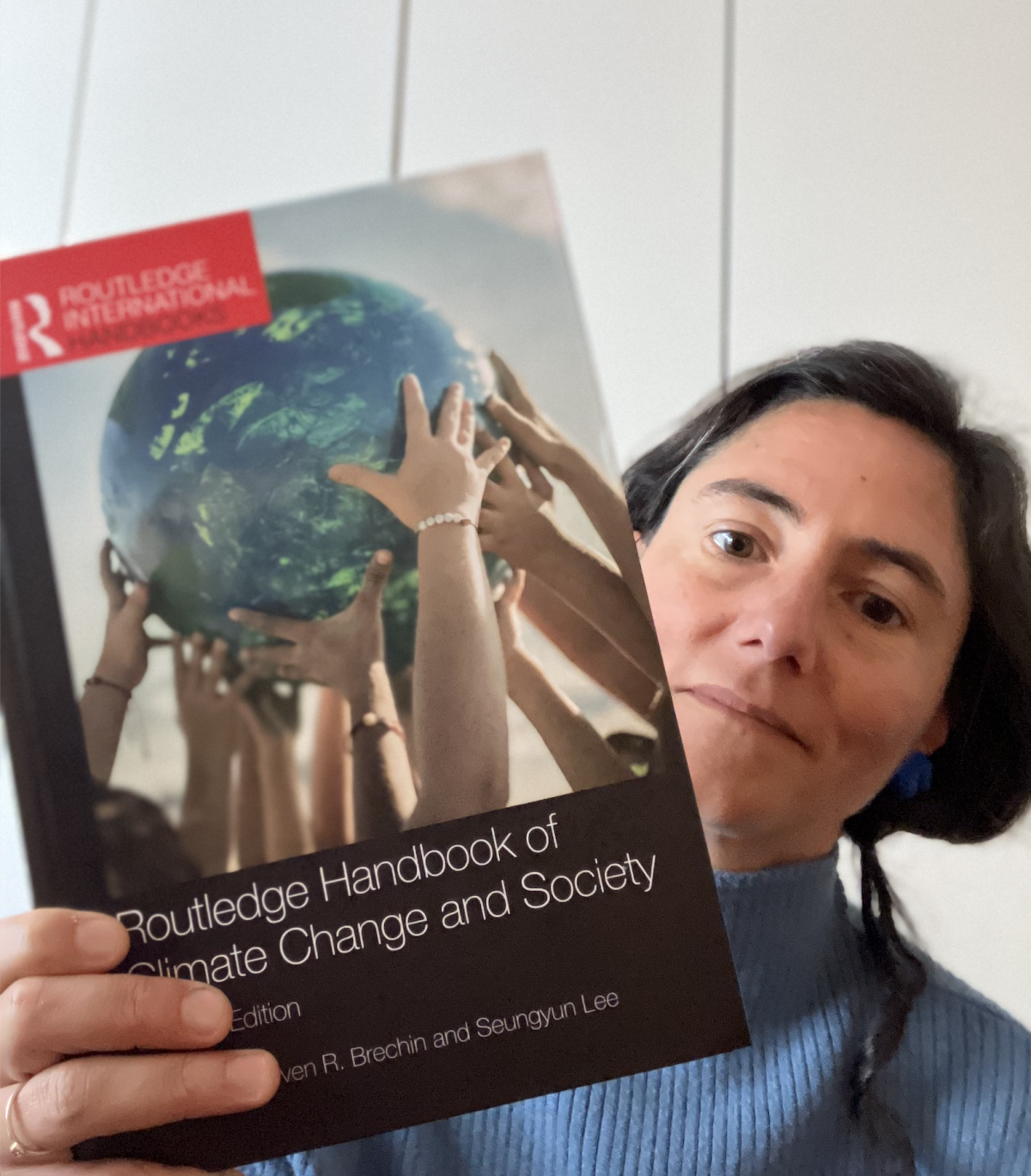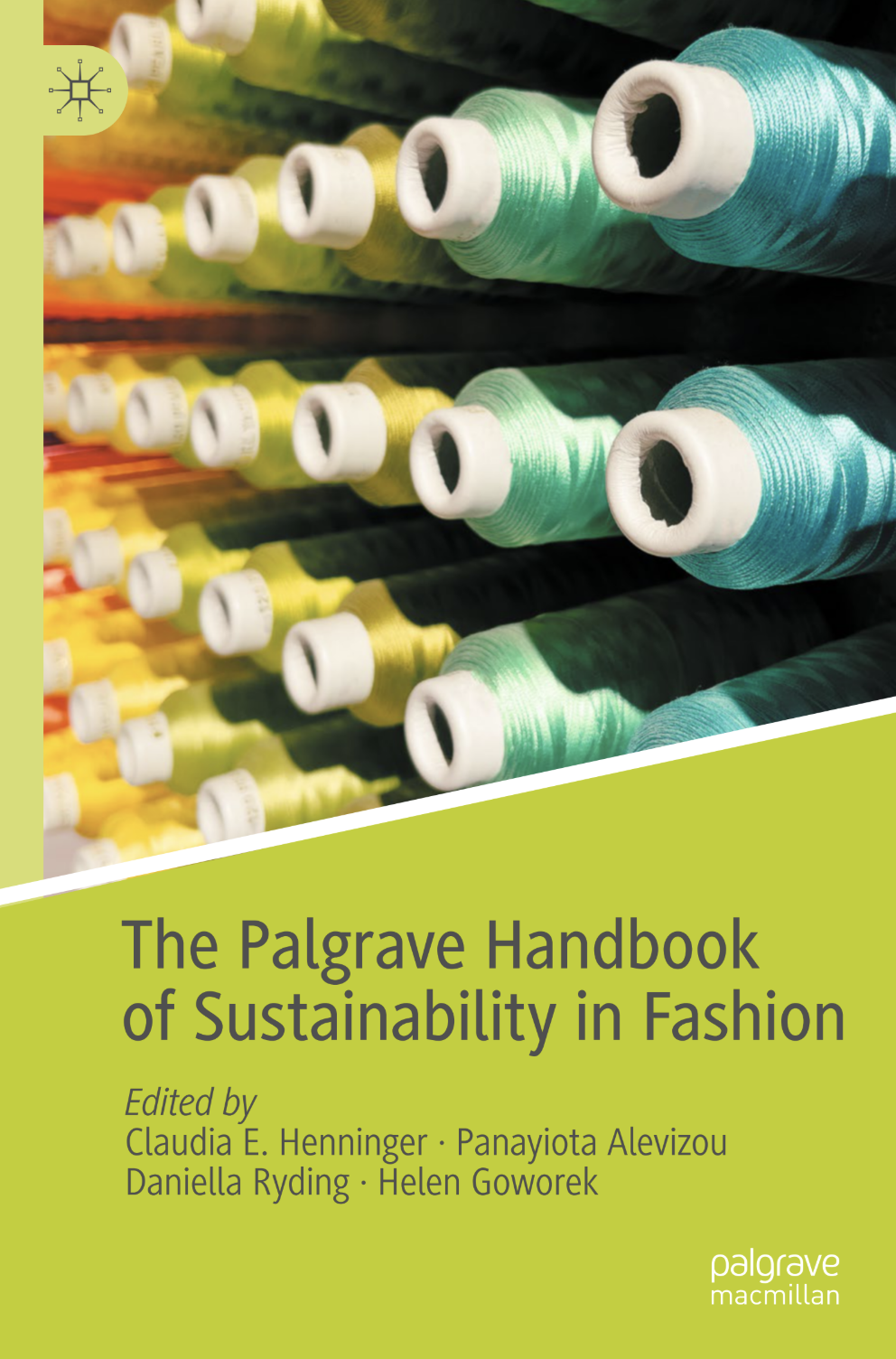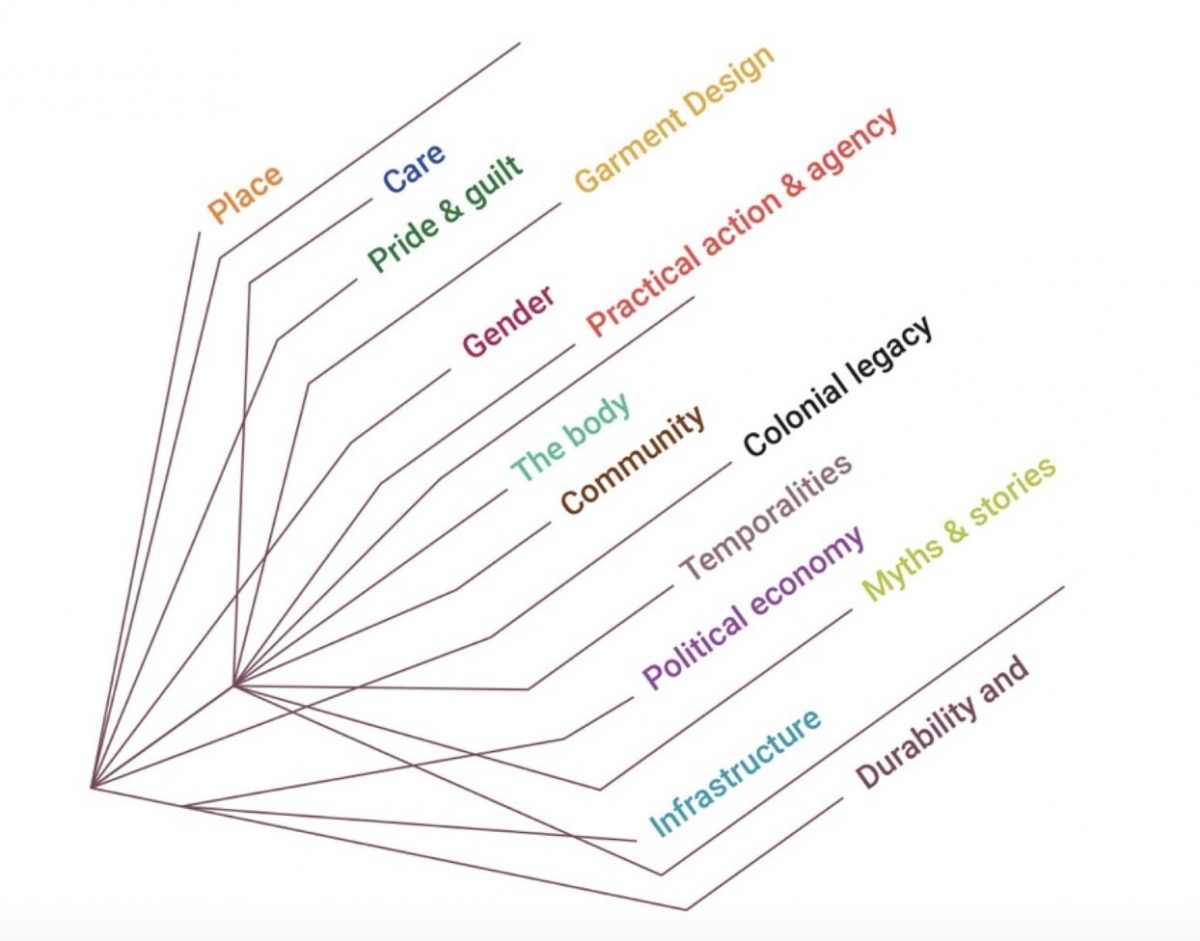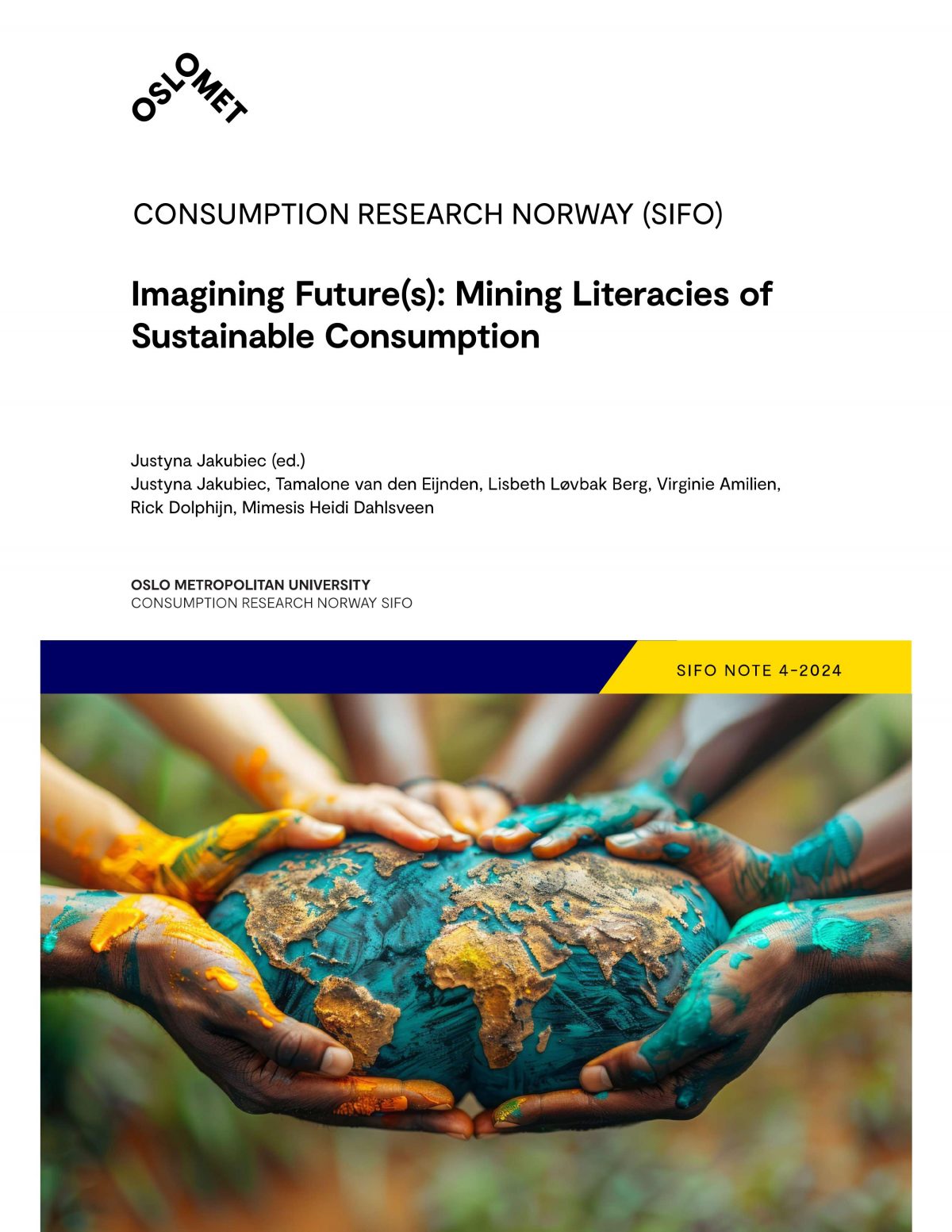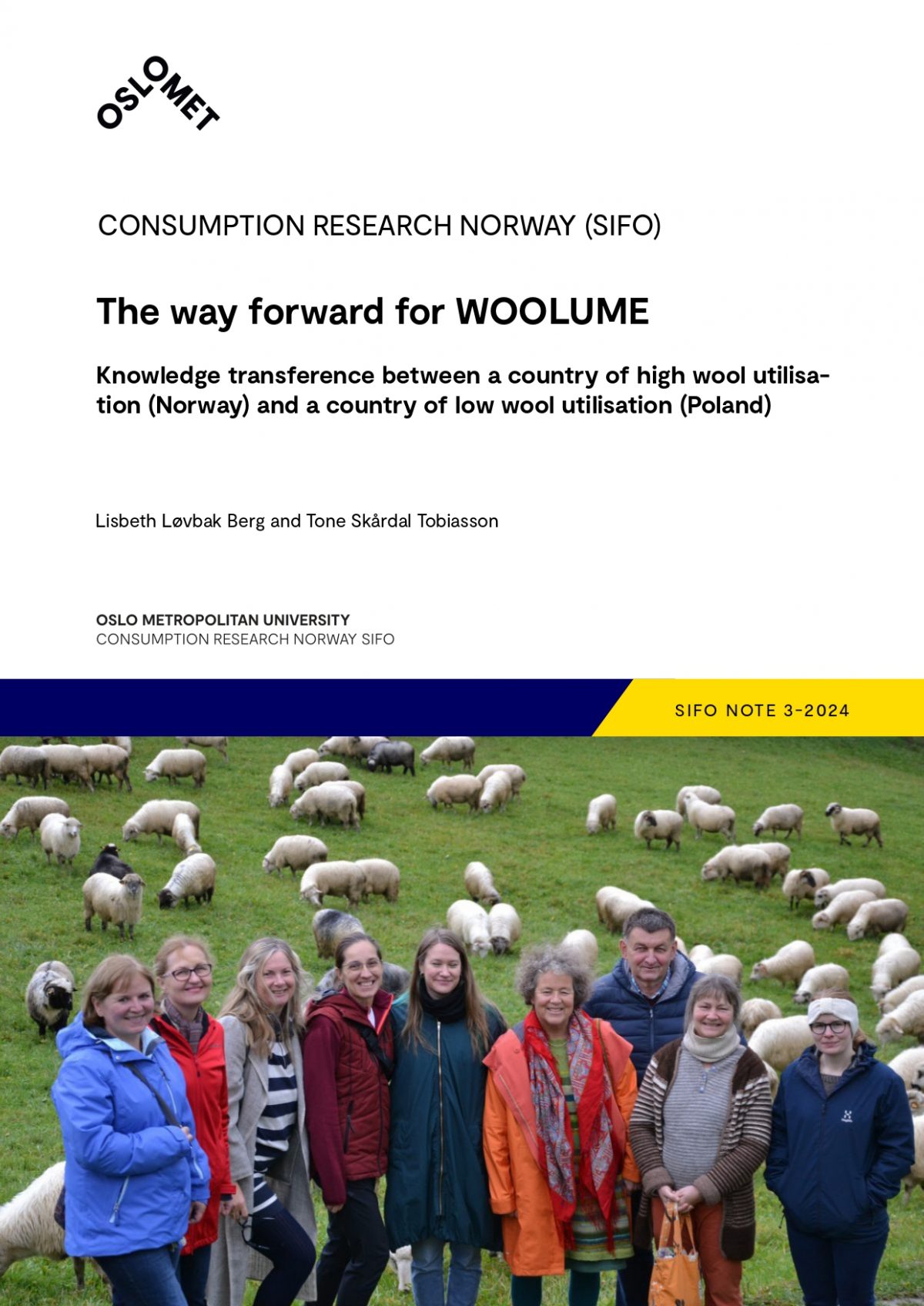Pakket i plast
Authors: Kate Fletcher and Ingun Grimstad Klepp
This talk was a part of the Forskning i Friluftsliv 2024 Conference, in Oslo (se more on norskfriluftsliv.no).
Watch the talk or read the full text below.
Abstract
Friluftsliv (outdoor life) is not only a part of the solution, but also a part of the problem when it comes to misuse of nature (Aall et al., 2011). We will reflect around this dilemma in the following text, using synthetic (plastic) clothing as a starting point, additionally we will ask how plastic influences outdoor wear and with our experience of nature. The research question we will discuss is: How do the clothes and shoes we use in friluftsliv create feelings of closeness, control and distance to nature? We will ground our discussion by contrasting plastic and natural materials.
Method
A case study was used to gather data on the experience in nature with non-synthetic outdoor wear and shoes. Life Writing (Fletcher, 2022), photography and sensory ethnography (Vannini, 2024) were the methods. We used ourselves as informants, spending three autumn days in Vågå (Norway) in 2024. The methodologies are self-biographical and make use of feelings and bodily experiences that take place when out in nature wearing non-synthetic garments and shoes. The aim was to describe what we experienced, both positive and negative by not using plastic clothes while in nature. This fieldwork is only one part of a bigger initiative that we hope will result in a project where we can explore the theme of outerwear in friluftsliv in more depth.
Water, valleys, mountains, birds and much more under, over and around us played a part in our experiences. We also collaborated with other partners, most importantly a small leather tanning company ULU1, operated by Sofie and Roni. ULU tans leather and hides gathered in the area, in addition to reconstructions and guided nature tours. Reindeer is the most important resource, and they tan the hides using natural resources such as bark and brain mass from the reindeers (Klepp & Haugrønning, 2021). Accompanying us on one of the days was a film crew from Frys Film2. We wish to thank all our partners, from the reindeer and rain to Sofie and Roni and all their children.
Synthetic clothing in friluftsliv
Friluftsliv has the same environmental challenges as society at large, growing volumes of things. This challenge is driven by another important factor when it comes to clothes and textiles; plastification. These two growing aspects are connected because bigger volumes of textiles would not be possible without plastification (Changing Markets Foundation, 2021; Klepp et al., 2023). Plastification contributes to pollution during production, use and waste by the means of plastic and microplastics (Kounina et al., 2024).
There is no doubt that plastification and growing volumes of outerwear has had a lot of positive effects. We can pack lighter and be safer when outside. The road to the goal, not matter how high or far, is both shorter and faster be it sun or rain, with safer and more remarkable activities added to the mix. The consumption connected to friluftsliv is right for Norway and this growth meets little criticism (Klepp & Skuland, 2013). Few have asked what we lose with this development and little real alternatives to synthetics exists on the marked for many types of garments. Plastification has come such a long way that many consumers do not see it as a serious substitute to go on long trips without synthetic clothing.
The use of synthetics has a very short history. Humans have existed for approximately 300 000 years on this earth. Clothes have been used for only one third of that time. Synthetic textiles, meaning fibers made of fossil fuels (plastic), were invented almost 100 years ago, but they did not explode in popularity until the 1980s. This period saw the invention of synthetic textiles such as polyester, fleece and Gore-Tex, which has since become staples of the outerwear industry3. Our dependency on synthetics in outerwear is, historically, a short one. Furthermore, these past decades humans have spent more time inside than ever before. Our wish to spend time outside without plastic is therefore grounded in many historical role models and references. The garments we used were a combination of copies of old garments (form the Iron and the Viking ages) and newly developed garments made with old techniques and principles.
Results
We both use a lot of clothing made from natural fibers, yet being clothed without any plastic felt different. We had chosen four examples form the empirical material and structured them around four senses; sight, touch, smell and hearing.
Sight
The sense of sight is important for friluftsliv. We enjoy the view and lose ourselves in the colors and details around us. Yet, we do not only see the nature. We also see each other not only while out in nature, but also on pictures from the trips afterwards.
In the presentation we showed Figure 1, a picture form the trip where Ronny, Sofie and Frys film crew were with us. The film crew documented as we walked up the path on Snaufjellet in the drizzle. The picture is of Ingun and Sofie in a grand scenery with the sky, mountains, fog and the mountain we walked on covered in low heather. The colors are muted, with warm rust-tones and cautious greys in the forefront, on our clothes and in the nature around us. The reindeer moss and a light grey hint of a clearing in the clouds bring most contrast to the picture. In the presentation we showed a close up of the two people on the right of the image. And then we panned out, showing the same photo but with a wider angle. Here the Frys film crew is also visible. In this angle the eye travels away from the greys and rustics and attaches itself to the strong synthetic colors of raincoats and backpacks. Yellowish greens, orange, turquoise and black appear in the foreground and catch the eye. These clothes and equipment are not derived from natural materials, not ‘belonging’ in the nature, but create a contrast to it, which is often the case in photos of the outdoors. Photos of nature with and without humans are inherently different this way. Synthetic clothing and clothing made of natural fibers with synthetic colors change the way we look and what we see.

Touch
The sense of touch is understood as everything we feel through our skin. We experience heat, cold, wind, different surfaces and much more. We feel the clothes we have on our body. We use clothes and shoes to avoid feeling too much and perhaps avoid feeling every pinecone on the path and every needling wind gust.
A lot of synthetics in outerwear are used to avoid feeling different sensations, such as being wet or cold. Fig 2 shows Ingun in the rain , to reflect on what we lose when using plastic. Gore-tex and other technologies of the same sort are characterized by the use of microporous film containing the forever-chemical from the PFAS group. The aim of the film is to keep away moisture, while at the same time having so-called “breathable” qualities. This in turn means that the film is letting water vapor through. In theory, this film is keeping the wearer dry by letting out the vapor created by the body when moving (or even when sitting still or sleeping), while it simultaneously is supposed to keep rain or sea spray out. In reality, this does not always work.

Other techniques to keep water out can be used. One such way is to lead the water away. The double coat which used to exist on sheep of older species, before being bred off in order to adapt the wool to modern spinning machines, comprises of long covering or guard hairs which lead water and moisture away from the soft underwool. We humans use this technique when hanging up a chain from gutters rather than installing a pipe to lead away the water. The water follows the chain down to the ground.
Ingun wore a short cape on the trip, which was made out of seal skin. The raindrops dripped from her hair and down the seal skin before being led away by the guard hairs on the collar. Ingun was warm beneath the hair and skin. The clothing she wore did not cover her entire body. Her knees and calves were uncovered. “I am particularly fond of water in all forms. Sea, rain, ice, snow and fog. Being able to feel water run down the skin is lovely” she explains. Taking off clothes is one way to keep them dry of course. Going out in nature without clothes or with some body parts uncovered allows for the feeling of rain against the skin. To be wet is not always synonymous with being cold. Our habit of wearing garments that keep the water out, robs us of the feeling of rain against the skin. This is further enforced when using tightly woven clothing which not only keeps the water away, but also keeps the wind and yes, even air out from our biggest sensory apparatus, our skin.
The feet are the body part that has been affected by plastification the most. This is not a theme that will be explored further as being barefoot or nude, meaning without shoes or clothes, changes the way we exist in the world. We hope to be able to return to this subject and many others at a later date.
Smell
Clothes smell. In actuality, we do a lot in order to control the smell of clothing, such as washing them (Klepp et al., 2022; Laitala et al., 2022; McQueen et al., 2022). The sense of smell has a fascinating history, being perceived as animalistic and subjugated to sight as a less intellectual and less human sense (Classen et al., 1994) Klepp et al., 2022).
Textiles, as well as leather and fur have a distinct odor. Different fabrics are also affected differently by sweat and other bodily functions. Sweat lends most odor to synthetics and least to wool (Klepp et al., 2016; Rathinamoorthy & Thilagavathi, 2014). Synthetic fibers are therefor put through different chemical process to supress the development of smells. Materials also have a distinct smell, which we can like or dislike. The following is a quote from Kate’s dairy about the experience of smell when it comes to clothing:
I am wearing a skin jacket made from reindeer hide and tanned with bark. It is light on my body, my shoulders, my arms, and it fills my nose with the scent of animal. The smell is full, strong and heavy. In a culture obsessed by cleanliness and fragrance, it is an odour of significance. It is a jacket marked in a way that synthetic ones never are – directly by a life, by a body that gave us its skin, by a heart of blood, the flex and taint of muscle. Does Friluftsliv have a smell?
Hearing
Both silence and noise are important aspects of friluftslivet (Faarlund 1992). When it comes to clothing this topic is most discussed in relation to hunting. Silent clothing is what differentiates hunting attire from other outdoor wear. But the sound clothes make is important for not only potential hunting prey.
Woven fabrics make more noise than their knitted counterparts, and the sound is often an important and appreciated part of the fabric’s aesthetic. The rustling of a silk underskirt is well described in novels. Woven synthetic textiles such as Gore-tex jackets and trousers make a lot of noise. They rustle when movement makes the fabrics rub against each other. This became obvious on the trip where the film crew joined us. Instead of the birds surrounding us, all we could hear was their clothing. making it almost impossible to hear anything other than our own selves. Environmental philosophers might say that this is the root of the problem. We always put ourselves in focus. What is necessary for us to start dressing in a way that allows us to listen to the world around us and less to ourselves? The big portion of outdoor wear comprising of synthetics with water- and wind resistant properties contributes to putting ourselves in focus.
Conclusion
We have shown that friluftsliv does not gain a lot by the use of synthetics and on the other hand loses something by looking at how plastic effects out senses (sight, hearing, touch, smell) when out in nature. Outdoor wear contains more plastic (synthetic fibres) than other types of clothing. Synthetics fibres and the laminates that come with, create a literal barrier between us and nature. Sometimes this is what we want, other times not. Plastic is closely related to overproduction and waste generation due to low cost and easy production. The fibres are so strong that they outlast the wearer and keep polluting even when breaking down back to earth. The garments that we use to be safe and comfortable in nature also keep the nature away from us, raise a barrier between us and the world and do not fit into earth’s natural cycle.
Environmental philosophers have long argued that the root of the environmental challenges we face is connected to our willingness to see ourselves as separate from nature (e.g. Plumwood, 1998). Therefore, it is possible to say that the synthetic fibres in clothing are the embodiment of techniques used to dominate and control nature, despite us being very much dependent on it and wishing to unite with it by the ways of friluftsliv. This paradox is at the heart of our work.
References
Aall, C., Klepp, I. G., Støa, E., Engeset, A. B., & Skuland, S. (2011). Leisure and sustainable development in Norway: part of the solution and the problem. Leisure Studies, 30(4), 453-476. https://doi.org/10.1080/02614367.2011.589863
Changing Markets Foundation. (2021). Fossil Fashion: The hidden reliance on fossil fuels. C. M. Foundation. http://changingmarkets.org/wp-content/uploads/2021/01/FOSSIL-FASHION_Web-compressed.pdf
Classen, C., Howes, D., & Synnott, A. (1994). Aroma: the cultural history of smell. Routledge.
Faarlund, Nils 1992. Støy og stillhet i Friluftslivet. SFT rapport 93:39. https://www.nb.no/items/URN:NBN:no-nb_digibok_2011011405039
Klepp, Ingun Grimstad: syntetiske fibre i Store norske leksikon på snl.no. Hentet 29. desember 2024.
Klepp, I. G., Berg, L. L., Sigaard, A. S., Tobiasson, T. S., Hvass, K. K., & Gleisberg, L. (2023). THE PLASTIC ELEPHANT: overproduction and synthetic fibres in sustainable textiles strategies (SIFO-Project report 5-2023, Issue. https://hdl.handle.net/11250/3086387
Klepp, I. G., Buck, M., Laitala, K., & Kjeldsberg, M. (2016). What’s the problem? Odor-control and the smell of sweat in sportswear. Fashion Practice: The Journal of Design, Creative Process & the Fashion Industry, 8(2), 296-317. https://www.tandfonline.com/doi/full/10.1080/17569370.2016.1215117
Klepp, I. G., & Haugrønning, V. (2021). Naturgarvet skinn i et miljøperspektiv. In: Forbruksforskningsinstituttet SIFO, OsloMet.
Klepp, I. G., Laitala, K., & Rathinamoorthy, R. (2022). The Consumer Perception of Odour. In G. Thilagavathi & R. Rathinamoorthy (Eds.), Odour in Textiles: Generation and Control (pp. 1-13). CRC Press. https://doi.org/10.1201/9781003141426-1
Klepp, I. G., & Skuland, S. (2013). The Rationalisation of Consumption Reasons for Purchasing Outdoor Recreational Outfits. In M. Vaccarella & J. L. Foltyn (Eds.), Fashion Wise (pp. 43-52). Inter-Disciplinary Press.
Kounina, A., Daystar, J., Chalumeau, S., Devine, J., Geyer, R., Pires, S. T., Sonar, S. U., Venditti, R. A., & Boucher, J. (2024). The global apparel industry is a significant yet overlooked source of plastic leakage. Nature Communications, 15(1), 5022. https://doi.org/10.1038/s41467-024-49441-4
Laitala, K., Klepp, I. G., & Haugrønning, V. (2022). Textile Cleaning and Odour Removal. In G. Thilagavathi & R. Rathinamoorthy (Eds.), Odour in Textiles: Generation and Control (pp. 197-222). CRC Press. https://doi.org/10.1201/9781003141426-10
McQueen, R. H., Kowton, J. E., & Degenstein, L. M. (2022). More than Just Appearance: Management of Clothing-Related Odor in Everyday Life. Fashion Practice, 1-26. https://doi.org/10.1080/17569370.2022.2062830
Rathinamoorthy, R., & Thilagavathi, G. (2014). Effect of Antimicrobial Finish on Odor Control Properties of Apparel Fabric. Journal of Textile & Apparel Technology & Management (JTATM), 9(1).

